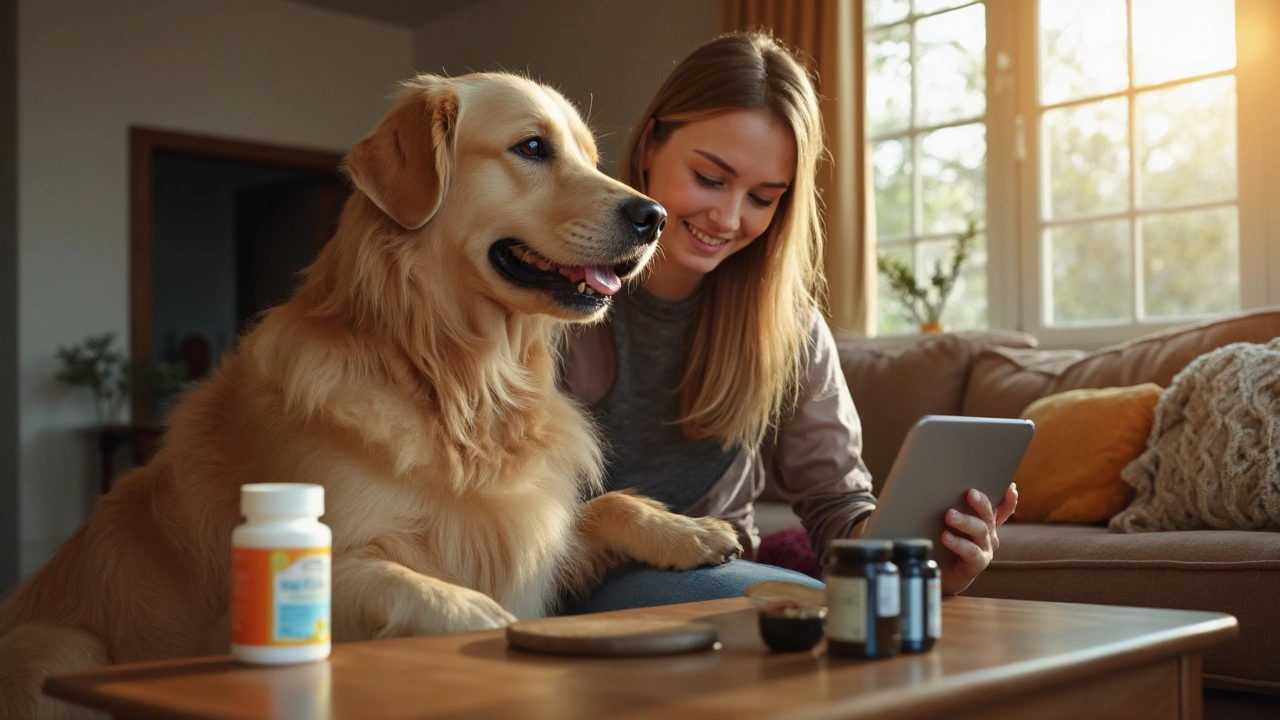Canine Joint Support – Keep Your Dog Moving Comfortably
If your pup is slowing down on walks, climbing stairs feels like a chore, or you hear a slight squeak when they stand up, their joints might need a little help. Joint problems aren’t just for senior dogs; even young, active breeds can develop wear and tear, especially if they’re into high‑impact sports. The good news is you can take simple steps now to protect those hinges and keep your dog enjoying life.
Why Joint Support Matters
Healthy joints are the foundation of a happy, active dog. The cartilage that cushions bones wears thin over time, and inflammation can turn a harmless ache into chronic pain. When a dog’s movement becomes painful, they may avoid exercise, gain weight, and breed new health issues. Supporting joints early can slow cartilage loss, reduce inflammation, and maintain mobility longer.
Effective Supplements & Everyday Tips
Most owners start with supplements because they’re easy to add to food. Here are the three ingredients you’ll see most often and why they work:
- Glucosamine – a building block for cartilage; helps repair tiny cracks and keeps the joint surface smooth.
- Chondroitin – works with glucosamine to retain water in cartilage, making it more flexible.
- Omega‑3 fatty acids (EPA/DHA) – natural anti‑inflammatories that calm swelling and support overall joint health.
Look for products that list these ingredients in the label and provide a clear dosage based on your dog’s weight. A common starting dose is 500 mg of glucosamine per 20 lb of body weight, split into two meals.
Supplements are only half the picture. A balanced diet rich in high‑quality protein and healthy fats supplies the nutrients your joints need to stay strong. Avoid foods high in sugar or artificial fillers, as they can aggravate inflammation.
Exercise plays a big role, too. Short, regular walks on soft surfaces (grass or dirt) are better than long runs on concrete. Gentle range‑of‑motion stretches—like encouraging your dog to sit, stand, and gently turn in circles—keep the joint capsule flexible without overloading it.
Watch your pup’s weight. Even a few extra pounds put extra stress on the hips and knees, accelerating wear. Use a measuring cup for treats and keep snacks low‑calorie. If you’re unsure about the right amount, a quick check‑in with your vet can set a target weight and feeding plan.
When you notice signs like limping, stiffness after rest, or reluctance to jump, don’t wait. Early intervention with a vet‑approved supplement and a tweak in activity can prevent a minor ache from becoming a major problem. Some owners find a short course of a non‑steroidal anti‑inflammatory (NSAID) prescribed by a vet helps jump‑start recovery, but always follow professional advice.
Finally, consider joint‑support toys. Soft, chew‑able toys that encourage gentle play let muscles stay active without high impact. Puzzle feeders also keep your dog moving their head and neck, supporting smaller joints in the spine.
By combining the right supplement, balanced diet, smart exercise, and weight control, you give your dog the best chance at a pain‑free, active life. Start small, stay consistent, and watch your furry friend bounce back to their happy self.
What Supplements Are Best for Dogs? Real Answers from the Field
This article breaks down which supplements actually make a difference for your dog's health. It covers when your dog might need vitamins, joint support, or extra probiotics—plus how to spot snake oil in the pet aisle. You'll find out what really works, how to read labels, and when you can skip supplements altogether. The advice relies on current scientific research and real-life stories from pet owners. Every pet parent who loves their dog will find something helpful here.
